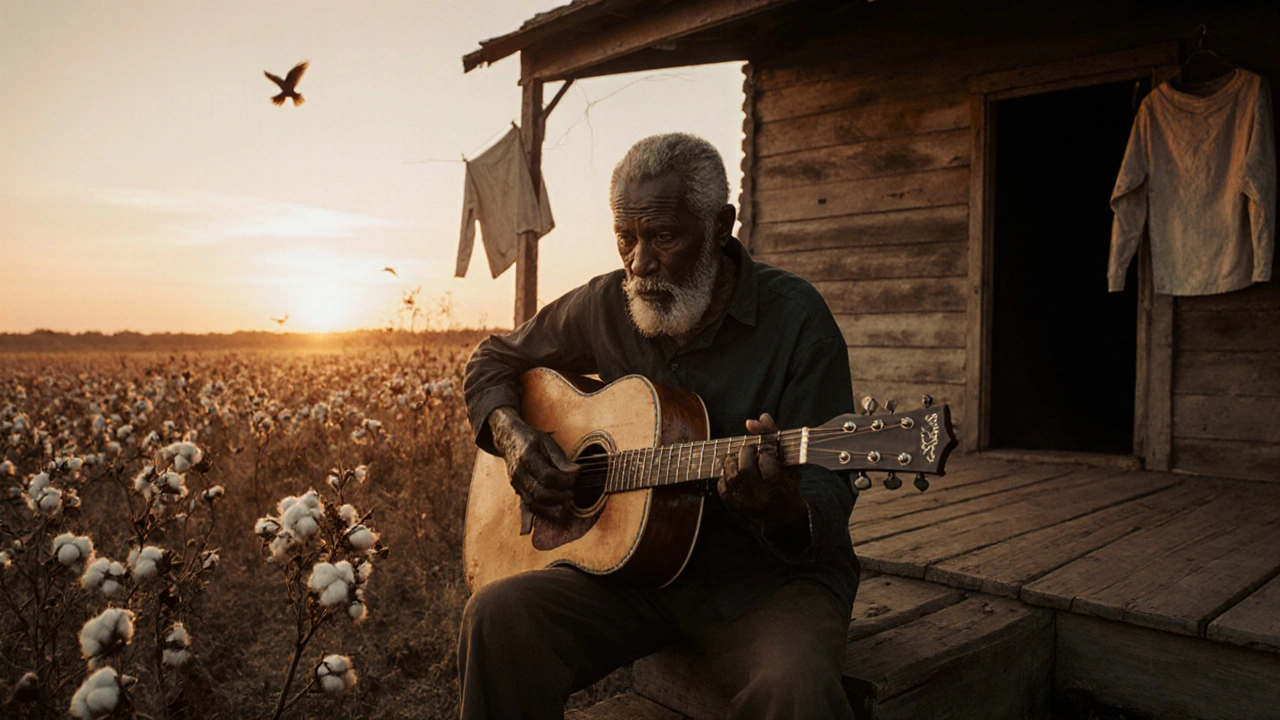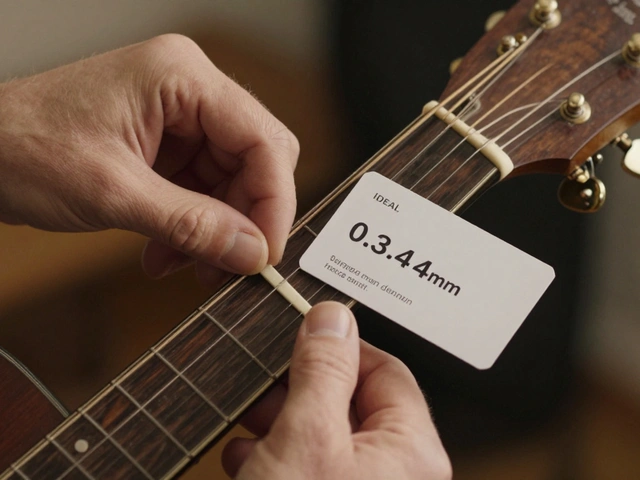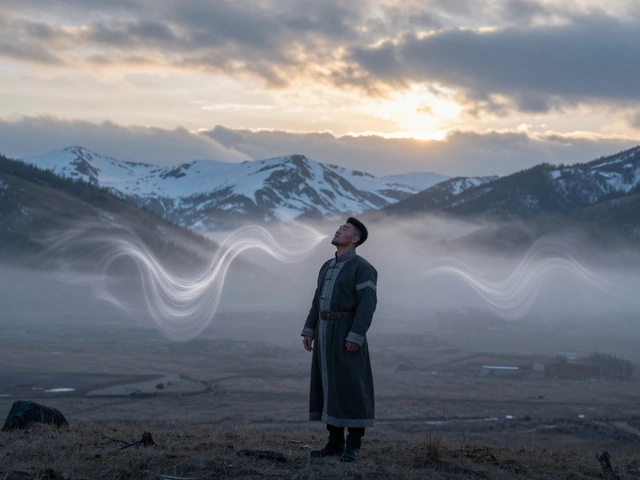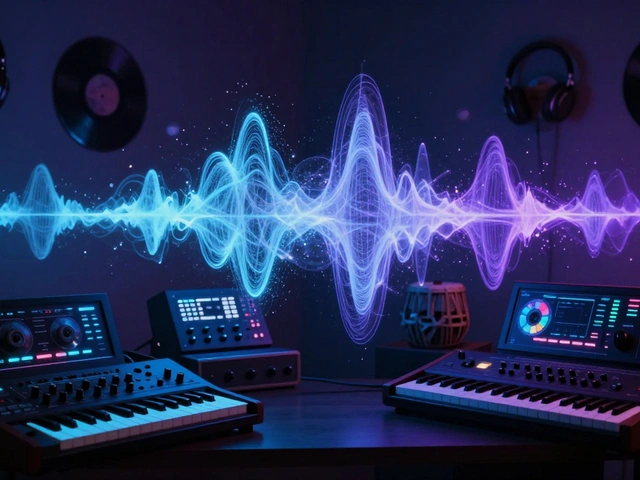Blues Chord Progression Generator
Create Your Blues Progression
The 12-bar blues is the foundation of blues music. This generator helps you understand the chord structure, play along, and hear how it sounds in different keys.
The 12-bar blues structure: 4 bars of tonic (I), 2 bars of subdominant (IV), 2 bars of tonic (I), 1 bar of dominant (V), 1 bar of tonic (I), 1 bar of subdominant (IV), 1 bar of dominant (V), ending with a turnaround.
Chord Progression
How to play
The 12-bar blues is played in 4/4 time. Each chord gets 1 bar. To play the basic rhythm, strum the chord on beats 1 and 3.
For a more authentic blues feel, add eighth-note strums and bluesy bends on the guitar. Listen to B.B. King or Muddy Waters to hear how the rhythm works.
Blues music didn’t start in a studio. It started in the fields, on porches, and in sharecropper cabins.
It came from pain, from long days under a hot sun, from voices that had nothing but their words and a guitar to say what no one else would listen to. That raw honesty is still the heartbeat of blues today-even as the world around it changes. The genre has moved from Mississippi dirt roads to Chicago electric clubs, from vinyl records to Spotify playlists, but its soul hasn’t faded. It’s adapting, surviving, and even thriving.
The roots: Where blues began
Blues music took shape in the late 1800s in the Deep South, especially in Mississippi, Louisiana, and Texas. It grew from African musical traditions, spirituals, work songs, and field hollers. The structure was simple: three lines, AAB pattern, with the first line repeated and the third offering a response. The lyrics told real stories-lost love, hard labor, injustice, migration. The sound? Raw, unpolished, emotional.
Early blues musicians like Charley Patton, Son House, and Robert Johnson played with slide guitars, stomped feet, and voices that cracked with feeling. Johnson’s 1936 recordings, like "Cross Road Blues," became legends. Rumors said he sold his soul at a crossroads for his talent. Whether true or not, his music carried a weight that still echoes today.
Chicago electrifies the blues
When Black families moved north during the Great Migration in the 1940s and 50s, they brought their music with them. In Chicago, the acoustic guitar got plugged in. Amplifiers turned whispers into roars. Muddy Waters, Howlin’ Wolf, and Little Walter turned blues into something louder, sharper, and harder-hitting.
Muddy Waters’ 1950 track "Hoochie Coochie Man," produced by Leonard Chess, became a blueprint for rock and roll. His band included harmonica wizard Little Walter and guitarist Jimmy Rogers-each bringing their own fire. The Chicago sound wasn’t just music; it was a statement. It said: we’re here. We’re loud. We’re not going back.
By the 1960s, British bands like The Rolling Stones, Eric Clapton’s Yardbirds, and John Mayall’s Bluesbreakers were copying these Chicago records note for note. They didn’t just admire the blues-they made it global.

Modern blues: Who’s keeping it alive?
Blues didn’t die when the 1970s hit. It just changed shape. In the 1980s and 90s, artists like Stevie Ray Vaughan brought it back with fiery guitar work and deep emotional delivery. His 1983 album "Texas Flood" sold over a million copies and proved blues could still reach mainstream audiences.
Today, the scene is more diverse than ever. Women like Shemekia Copeland and Koko Taylor (before her passing) broke gender barriers in a genre once dominated by men. Younger artists like Fantastic Negrito, Gary Clark Jr., and Beth Hart blend blues with rock, soul, hip-hop, and even electronic elements.
In Australia, bands like The Teskey Brothers are winning international awards. Their 2019 album "Run Home Slow" sounds like it was recorded in a 1960s Memphis studio, but they’re from Melbourne. They don’t imitate-they reinterpret. Their success shows blues isn’t a museum piece. It’s a living language.
Technology and the future of blues
Streaming platforms have changed how people discover blues. Spotify’s "Blues Classics" and "Modern Blues" playlists have millions of listeners. YouTube channels like "Blues Foundation" and "The Blues Channel" post live sessions from small clubs in New Orleans, Detroit, and even Tokyo.
AI-generated music tools now mimic blues phrasing. Some purists hate it. Others see potential. A tool can’t feel the ache of losing someone, but it can learn the rhythm of a 12-bar progression. That’s not replacing the artist-it’s giving new musicians a starting point.
Blues festivals are growing. The Chicago Blues Festival draws over 300,000 people annually. The Australian Blues and Roots Music Festival in Goulburn sells out every year. These aren’t nostalgia acts. They’re young people, from 18 to 60, dancing, singing along, learning to play slide guitar for the first time.
Why blues still matters
Blues isn’t just about old songs. It’s about truth-telling. In a world full of curated feeds and polished pop, blues still speaks plainly. It doesn’t hide pain. It names it. It doesn’t pretend everything’s okay. It says: I’m hurting. And I’m still here.
That’s why it’s still taught in schools-from elementary music classes in Memphis to university courses in Sydney. It’s why prison choirs sing blues. Why veterans use it in therapy. Why a 16-year-old in Berlin picks up a guitar because they heard a B.B. King solo and felt something they couldn’t explain.
Blues is the original protest music. It’s the foundation of rock, R&B, soul, hip-hop, and even techno. Without blues, there’s no Jimi Hendrix. No Aretha Franklin. No Kendrick Lamar’s "Alright."

How to get involved today
You don’t need to be a musician to connect with blues. Start by listening deeper. Don’t just hear the notes-listen to the silence between them. That’s where the feeling lives.
- Listen to B.B. King’s "The Thrill Is Gone"-notice how he bends each note like it’s a sigh.
- Watch live footage of John Lee Hooker playing in a living room. No stage. No lights. Just him, a guitar, and the room.
- Find a local blues jam night. Most cities have them. Bring your instrument or just your ears.
- Try learning a simple 12-bar progression. G-C-D. Three chords. That’s all you need to start.
Blues isn’t about perfection. It’s about honesty. If you play it wrong, but you mean it-that’s still blues.
What’s next for blues?
The future of blues isn’t about going back. It’s about going forward-while staying true.
More artists are blending blues with global sounds: West African kora, Indian sitar, Indigenous Australian didgeridoo. Genres are mixing. A track might start with a Delta slide guitar and end with a trap beat. That’s not betrayal. That’s evolution.
Record labels are signing blues artists again. Independent labels like Fat Possum and Alligator Records are thriving. Young fans are buying vinyl. They’re not doing it for the nostalgia. They’re doing it because it feels real.
Blues will keep changing. It always has. But as long as someone picks up a guitar and sings about heartbreak, struggle, or hope-blues will still be here. Not as a relic. Not as a trend. But as a voice that refuses to be silenced.
Is blues music still popular today?
Yes. While it’s not always on top of the charts, blues has a strong, loyal following. Festivals sell out, streaming numbers keep rising, and new artists are gaining international attention. It’s not mainstream pop, but it’s far from dead. In fact, it’s growing in unexpected places-from Tokyo to Melbourne.
Who are the most important blues artists today?
Gary Clark Jr. brings blues-rock energy with modern production. Shemekia Copeland blends soul and blues with powerful vocals. The Teskey Brothers from Australia have revived classic sounds with fresh energy. Fantastic Negrito mixes blues with hip-hop and funk. And let’s not forget veterans like Buddy Guy, still touring and playing with fire at 88.
Can you learn blues without knowing how to read music?
Absolutely. Most blues musicians learned by ear. Listen to recordings, mimic the phrasing, play along. The 12-bar blues structure is simple: four bars of the tonic chord, two of the subdominant, two back to tonic, then one each of dominant and tonic, ending with a turnaround. That’s it. Feel matters more than theory.
Why do so many rock guitarists say blues changed their life?
Because blues teaches expression, not just technique. Rock guitar is about power and speed. Blues is about space, timing, and emotion. Jimi Hendrix, Eric Clapton, and Jimmy Page all studied B.B. King and Albert King-not just for licks, but for how they made a single note cry. That’s what makes a great guitarist, not how fast they can play.
Is blues only about sadness?
No. While many blues songs deal with pain, others are about dancing, laughing, partying, or just surviving. Muddy Waters’ "I’m a Man" is a boast. Howlin’ Wolf’s "Smokestack Lightnin’" is hypnotic and wild. Blues is about the full range of human experience-joy, anger, longing, pride. It’s not a genre of sorrow. It’s a genre of truth.
Final thought: Blues is a conversation
It started with a man in a field singing to himself. Now, it’s a global dialogue. Every time someone plays a bent note, every time a crowd claps along to a 12-bar groove, the conversation continues. You don’t need to be a legend to join it. You just need to listen-and then speak back.





